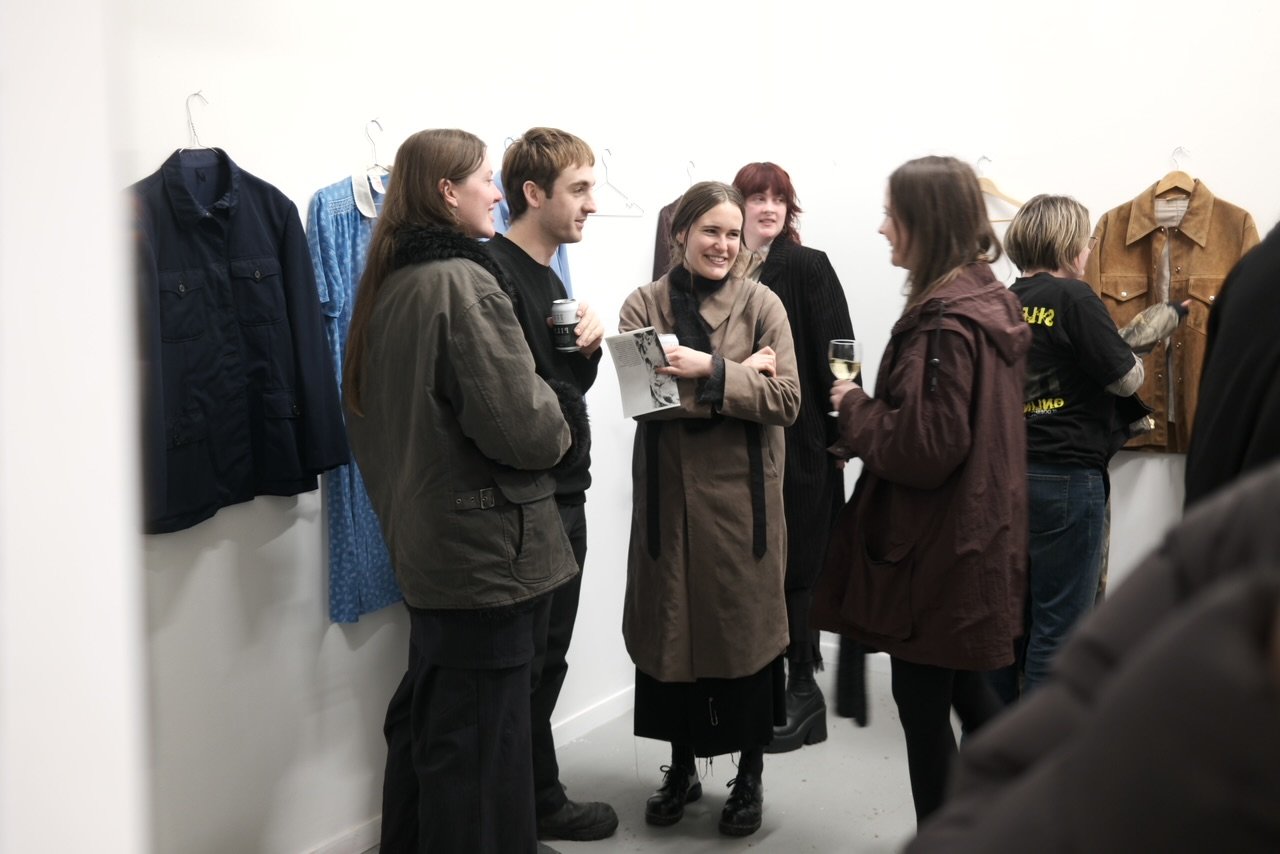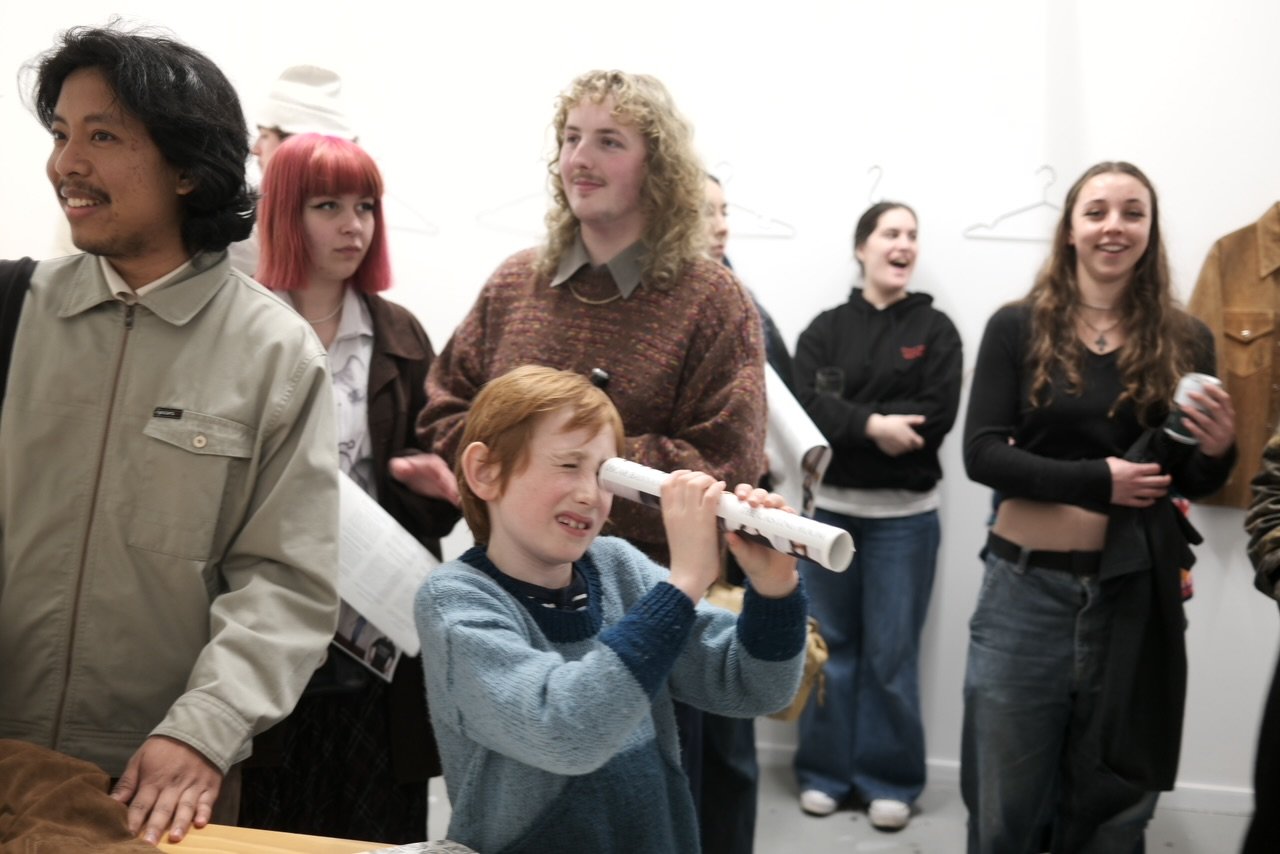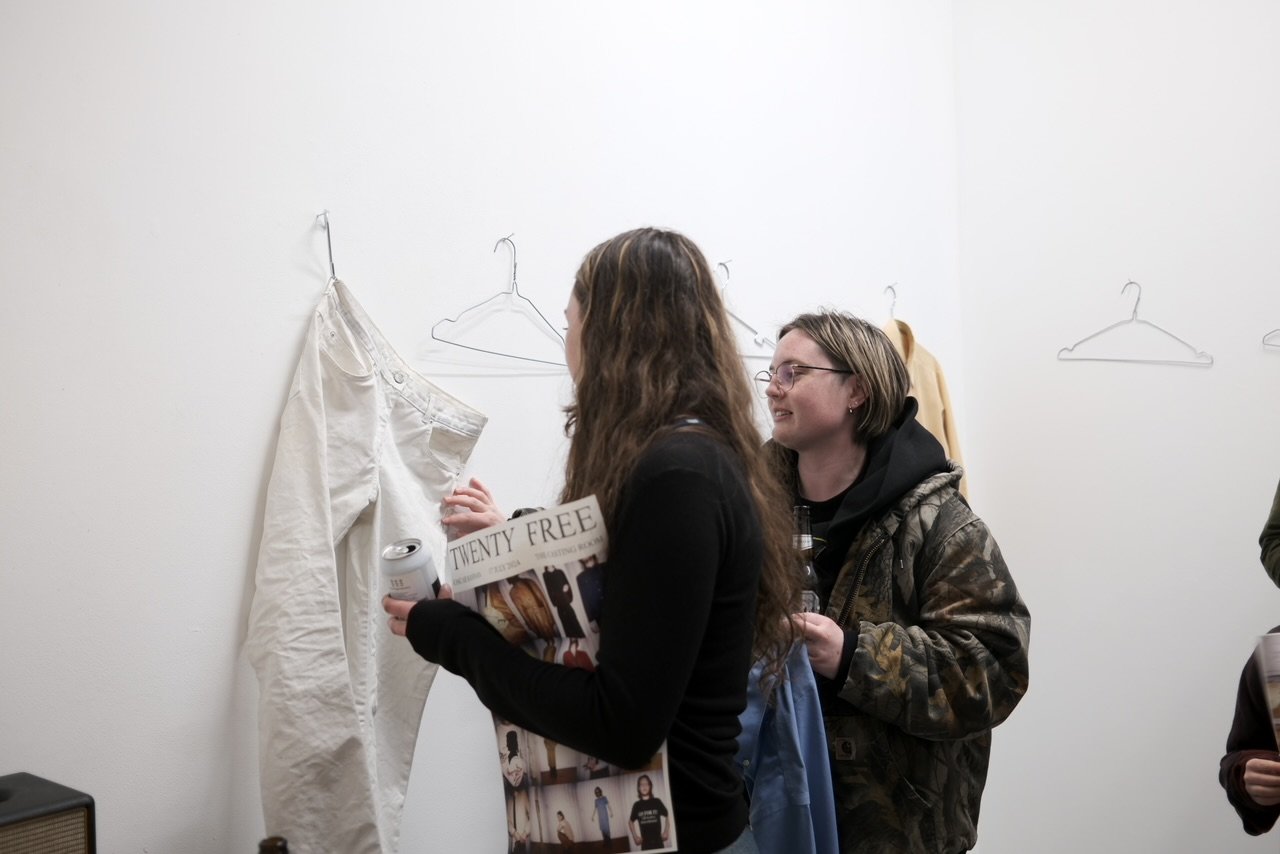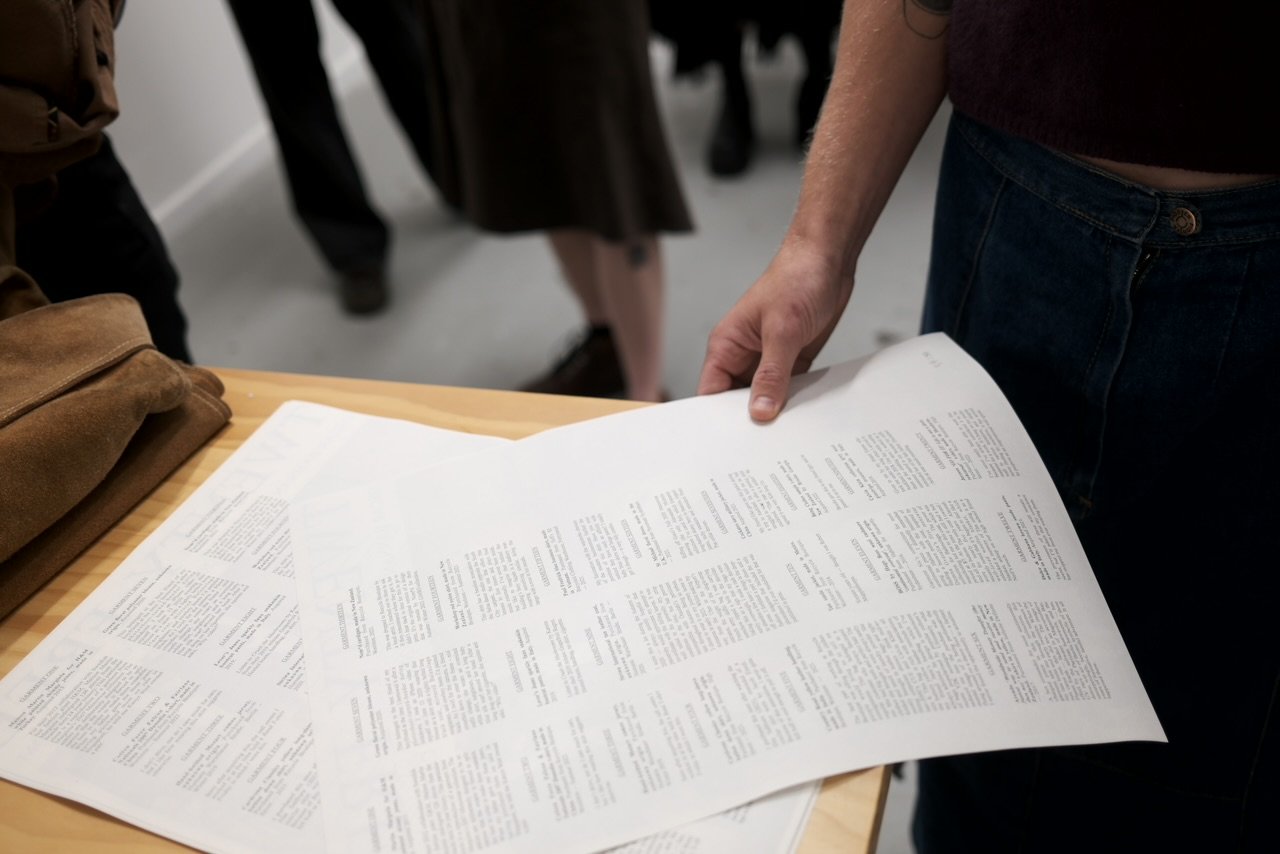Does Fashion Feel Better When It is Free?
Source: Supplied / Peter Bannan.
I was doomscrolling on my phone and stumbled on an Instagram story from Ilam School of Fine Arts about an upcoming exhibition in The Casting Room.
“TWENTY FREE is an experiment in free retail… For the duration of the of the exhibition all pieces will be available for free” the caption said. Twenty garments, all free. I was intrigued. Are these garments really free, or do they come with a hidden cost?
Oscar Bannan, a 4th year Honours Sculpture student invited everyone to the opening on July 17, 2024, and told the attendees that they were allowed to take anything that they wanted. In the exhibition space, attendees were treated as “customers,” and Oscar played the role of “shopgirl.”
“I just asked people to come and see me if they wanted to take something, so I could wrap it up and have a conversation with them.”
Oscar has always been passionate for fashion, having worked in the modelling industry and clothing boutiques. However, behind the scenes, he has questioned the ethics of the fashion industry. “At this stage, I’m looking at fashion from a distance instead of trying to actively participate in the industry. For the long time I thought I wanted to go to fashion school, but I decided that the model they teach is incompatible with my interests. I don’t want to build a brand and produce collections four times a year. Yeah, it just seems really unsustainable to me.”
Source: Supplied / Peter Bannan.
Fashion is one of the biggest contributors of environmental waste. This problem is not exclusive to huge fast fashion brands such as Shein, but includes high fashion brands as well. “The environmental impact is a big concern for me, in terms of the fashion industry and within my own art practice.”
While browsing the garments in the exhibition room, I couldn’t help but fixate on these 2012 Martin Margiela x H&M white painted skinny jeans. The jeans originally retailed for around £59 - $126 NZD, but fashion savants will know that pieces from this collection are priced expensively on second-hand retail platforms. I asked Oscar how he felt about designer labels, and if they really matter.
“Most brands are just trying to communicate a unique aesthetic standpoint or attitude… I think that’s what designers are really selling, right? You can take inspiration from something without having to actually buy into it. Take Balenciaga for example, you don’t need to fork out thousands of dollars on their clothes to participate in their aesthetic point of view; styling is maybe the most important and effective way to signal a reference. Their whole vibe can pretty easily be achieved with second-hand clothing or things that already exist in most people’s wardrobes.”
Source: Supplied / Peter Bannan.
He explained that it is liberating to engage with the mood of a brand rather than being concerned with the authenticity of a garment. However, the discourse on replicas and dupes is “another can of worms.”
Oscar’s main motivation for the show was thinking about the concept of retail therapy. His experience in retail helped the idea of achieving retail therapy but without the transaction of money.
“They say food tastes better when it’s free, but does the same apply to clothes?” Does it?
I felt weirded out when I picked up a pair of suede Dolce and Gabbana pants from the gallery wall, especially when I read the provenance of the garment on the exhibition handout, which was even weirder. It read, “The provenance of these will remain a secret, but I’ll admit that my conscience has stopped me from ever wearing these.” What the hell does that mean? So, I asked Oscar what was up with the description. He explained that he didn’t want to put the origin story in print, but was happy to tell me in person. It turned out not to be that weird, so I asked if I could have them.
Source: Supplied / Peter Bannan.
Oscar was grateful that the “shoppers” were sensible and thought seriously and realistically about the garments. He believes in the idea of extending the life of second-hand clothing, but he recognises issues in resell culture. “Re-sellers often just buy stuff in order to eradicate availability, orchestrating a scarcity that they can profit off. It just seems sneaky,” he laughed.
“There’s a sort of malice or advantage being taken there that doesn’t really sit right with me.”
He admits to having had a few lucky finds at op shops over the years which he ended up reselling for more than what he paid, but wasn’t actively seeking out garments for this purpose. “I think all second-hand stores are pretty great. Two-dollar clothing is great. SaveMart, not so great. I’ve definitely noticed a big decline in quality and increase of price over the past 10 years or so though. I think it’s largely because of the rise in popularity of buying second hand.
Source: Supplied / Peter Bannan.
Caroline Enting who writes for RNZ, stated that charity shops are bombarded with poor-quality clothing from fast fashion brands. The rise of prices of garments in op shops is not only influenced by resell culture and thrifting, but also the rising costs of operations and dumping fees for excess clothing.
The quote “The world is full of objects, more or less interesting; I do not wish to add anymore” written by the artist Douglas Huebler, is highly influential to Oscar’s art practice and shopping habits. “There are already so many great things out there that I don’t feel the need to seek out brand new stuff.” He also draws inspiration from artists that emphasise on the “process rather than product,” and those who use found objects as their main medium.
“Existing objects have so many stories to tell and such narrative potential. There’s this argument within fashion discourse, why make something if it already exists, and I always try to apply this sentiment to my practice. I think it comes largely from the hesitation to put more objects in the world. I don’t really think I’m technically able or smart enough to bring objects worthy of existing into the world. I just don’t think I am masterful enough, but that’s okay. It’s just not the way I make work.”
Source: Supplied / Peter Bannan.
When I went home, I tried on the pants, and they fit like a glove. It matched the clothes and accessories that I had in my wardrobe. It was perfect. I am glad I did not choose the white painted pants because it did not match any of my outfits. It could be difficult to wash a pair of painted jeans, anyway.
Now, think about your clothes in your wardrobe. What is your relationship with them? Were they impulse buys? How many times you enjoyed wearing them? Every time we shop for clothes or any other physical item, think about the impact it makes, even if you got them for free.






